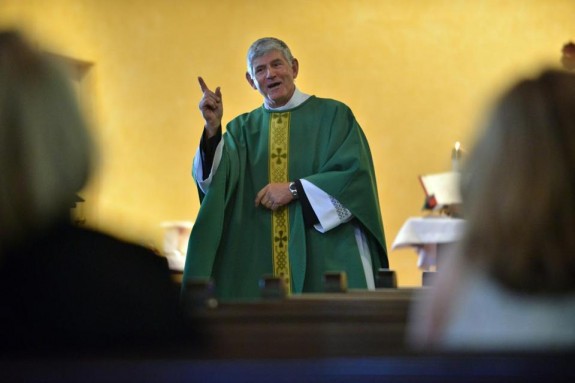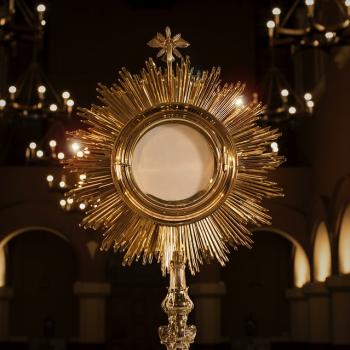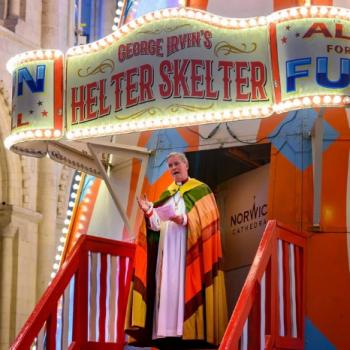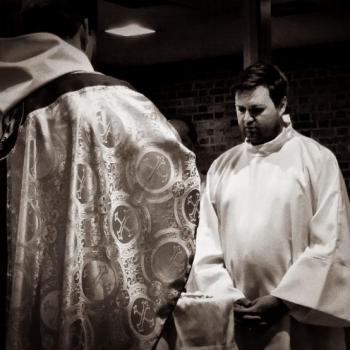Today, the Boston Globe offers a glimpse inside the Anglican ordinariate. Details:
Before Mass on a recent Sunday, the Rev. Jurgen Liias stood in a cramped sacristy of a Catholic church with an acolyte and cantor and began a call-and-response prayer of preparation.
Incense smoldered. The men thumped their chests in a gesture of contrition.
The elaborate ritual would seem unusual to most Catholic priests, who pray silently before Mass as they don their vestments, or quietly focus on the sacred work ahead. But Liias, who is 65, is different. He entered the church through a new doorway that lets members of the Anglican Communion return to the mother church in Rome while retaining their congregational communities — and, if they wish, much of their ornate ritual, including old Catholic traditions that Rome changed or left behind.
Pope John Paul II extended to Anglicans, including married priests, the opportunity to become Catholic in 1980. During the next 30 years, 100 or so Anglican priests entered the Catholic Church and were incorporated into local dioceses.
But some in the worldwide Anglican Communion — particularly the Episcopal Church, the religious body’s US province — wanted to make it easier for whole congregations to come in, and to be part of a group of like-minded churches.
At their request, Pope Benedict XVI established special “ordinariates” — basically superdioceses — especially for Anglican priests and congregations. The Personal Ordinariate of the Chair of St. Peter, which spans the United States and Canada, was created last year. It includes more than 30 congregations, including Liias’s St. Gregory the Great, which held its first Mass in April.
“They are on a pilgrimage together, as opposed to an individual journey,” said the Rev. R. Scott Hurd, the ordinariate’s vicar general.
It is a tiny movement so far, with fewer than 2,000 people spread across a vast continent, an infinitesimal proportion of the world’s 1.2 billion Roman Catholics.
In many respects, the ordinariate resembles the Eastern Catholic Churches that returned to Rome from the Eastern Orthodox Church and have been allowed to preserve their own worship traditions and structure.
Hurd said the Vatican created the ordinariate primarily to “promote Christian unity” by bringing Anglicans back into the fold of Catholicism.
He said Episcopalians who are attracted to Catholicism “usually struggle with the breadth of plurality in belief” within the Episcopal Church “and come to appreciate the definitive teachings that are found in Catholicism.”
Liias has spent most of his career at the margins of the Episcopal Church, embracing both charismatic and high-church worship styles, each of which would be alien to most Episcopalians in Massachusetts. An avuncular grandfather who hikes 14,000-foot mountains and has deep experience in the charismatic movement, he is as comfortable speaking in tongues as he is praying the rosary.












